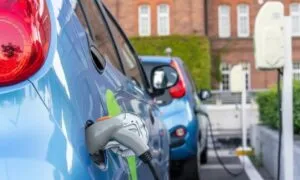Ever been in an elevator and wondered, “Am I being watched?” You’re not alone. Many of us find ourselves glancing around, looking for those tiny, hidden cameras we assume are there.
But is every elevator equipped with a camera, or is that just our imagination running wild? The fact is, not all elevators have cameras, but installing them has become very popular.
Let’s break it down and take a look at the role of cameras in elevators, their legality, and why they matter more than ever.
Table of Contents
ToggleAre Elevator Cameras Common?

Cameras in elevators are more common now than they were just a decade ago. But that doesn’t mean you’ll find one in every elevator you step into.
The decision to install a camera boils down to several factors, including the building type, location, and the level of security needed. High-traffic places like hotels, corporate buildings, and hospitals? More likely to have cameras.
Small apartment complexes in quiet suburbs? Maybe not. For newer buildings, especially in urban areas, it’s almost expected. Cities tend to have higher security concerns due to the potential for vandalism, crime, or general misbehavior.
Older buildings, on the other hand, might not have cameras unless they’ve been updated. Retrofitting older elevators is an option, but it’s often a cost decision for the building owner.
Factors That Influence Camera Installation
There are a few key reasons some elevators have cameras, and others don’t:
- Building Security Needs: Buildings with a higher risk of crime or where large numbers of people come and go tend to prioritize surveillance.
- Budget: Installing cameras, especially in older elevators, can be expensive, so not all property owners choose to invest in it.
- Legal Requirements: Some places have laws or guidelines that encourage (or even mandate) camera installation in certain types of buildings, especially those open to the public. You will notice that these laws are a bit different when compared to laws on outdoor surveillance.
The Purpose Behind Elevator Cameras
Why would a building invest in elevator cameras anyway? It’s more than just “big brother” keeping an eye on you. The real motivations are rooted in safety and security. Cameras in elevators play a crucial role in:
1. Deterring Misconduct
No one wants to get caught on camera vandalizing or committing a crime. Simply knowing a camera is there can stop someone from doing something they shouldn’t.
2. Monitoring for Safety
Emergencies happen in elevators—people get stuck, suffer medical incidents, or accidents occur. A camera helps monitor situations and alert responders faster.
3. Investigating Incidents
If something does go wrong, like a fight, theft, or accident, footage from the elevator camera can offer vital evidence.
4. Preventing Vandalism
Elevators are common targets for graffiti or property damage. Cameras help prevent this by discouraging people from defacing public or private property.
5. Enforcing Building Rules
Cameras also help ensure that people follow rules, such as capacity limits in elevators. Overloading an elevator can lead to mechanical issues or even accidents.
Legal Aspects of Elevator Cameras

So, if you are being watched in an elevator, is that even legal? The short answer is yes, in most cases. Elevators are generally considered shared spaces, so there’s not much expectation of privacy. However, there are still some legal guidelines in place that vary depending on location.
Key Legal Considerations
- Notification: In some places, it’s required to let people know they are being recorded. You might see signs in or near the elevator stating that there’s surveillance. This kind of notice is common, especially in public buildings.
- Audio Recording: Video surveillance is one thing, but recording sound opens up a whole other legal can of worms. In many places, recording audio without consent can violate wiretapping laws. That’s why most elevator cameras don’t capture sound—just video.
- Data Protection: Recorded footage must be stored securely, and access to it is usually limited. Only in the case of an incident (like a crime or accident) would someone review the footage, and it’s often deleted after a certain amount of time to comply with privacy regulations.
What Types of Cameras Are Used in Elevators?

Not all cameras are built the same, especially when it comes to something as tricky as an elevator. You’ve got a moving, enclosed space, which presents some unique challenges for camera installation. Let’s take a quick peek at the types of CCTV cameras often found in elevators:
- Dome Cameras: These are the most common type and are often mounted on the ceiling of the elevator. They’re dome-shaped and have a wide-angle lens, allowing them to capture everything that happens inside. Many of these cameras also come with night vision for when the lighting isn’t great.
- IP Cameras: These are high-tech cameras that can stream video directly over the internet. This allows for real-time monitoring and is great for buildings with integrated security systems that cover multiple areas.
- Wireless Cameras: Running cables through an elevator shaft can be complicated, so wireless cameras offer an alternative. They can connect through Wi-Fi or other networks, although maintaining a reliable connection in an elevator’s metal environment can be tricky.
Challenges with Installing Elevator Cameras

While adding a camera to an elevator sounds simple, it’s not always easy. There are a few technical hurdles to overcome, particularly in older buildings. Running cables through an elevator shaft isn’t just expensive—it can be logistically challenging.
Plus, as the elevator moves between floors, the camera has to maintain a constant connection to the building’s security network, which can be a technical headache. This is where modern solutions, like wireless cameras or IP systems, come in. But even those aren’t foolproof.
Wireless signals can struggle in the metal confines of an elevator shaft, making the setup process more involved than you’d expect.
Common Installation Issues
- Network Connectivity: Maintaining a stable video feed while the elevator moves.
- Power Supply: Ensuring the camera has a continuous power source.
- Cost: Installing and maintaining a reliable system can get expensive, particularly for older buildings needing retrofits.
So, Do All Elevators Have Cameras?
Not all elevators have cameras, but they’re definitely becoming more common, especially in larger cities and places with heavy foot traffic. The decision to install one depends on various factors, from the building’s security needs to the age of the elevator itself.
Cameras provide a range of benefits—deterring criminal behavior, offering real-time safety monitoring, and helping with investigations after an incident. Legally, most places allow video surveillance in elevators, but audio recording is usually off-limits unless proper consent is obtained.
As security technology continues to advance, the presence of cameras in elevators is likely to grow. And while you may not notice them, they’re often there, working quietly in the background to keep people safe.








